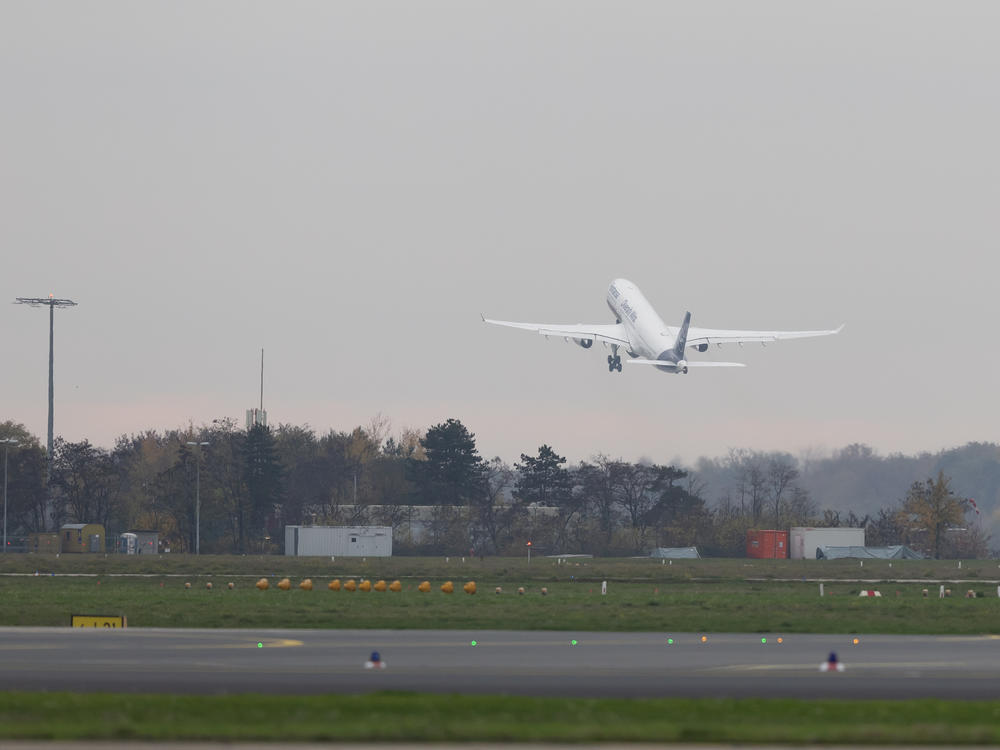Section Branding
Header Content
How dangerous is turbulence on airplanes? Here's what you need to know
Primary Content
Over the past week, significant turbulence caused one death and one hospitalization on a business jet and seven hospitalizations on a commercial flight. Turbulence usually just causes a bumpy ride, but it varies widely in severity and can cause damage to the plane and injuries to the passengers and crew on board — not to mention serious fear and anxiety among flyers.
Here's what you need to know about how to keep yourself safe and why turbulence happens.
How often does turbulence cause serious injuries?
To be sure, injuries from turbulence are rare. At flight cruising levels, only about 3% of the atmosphere has light turbulence, about 1% has moderate turbulence and a few tenths of a percent has severe turbulence at any given time, says Paul Williams, a professor of atmospheric science at the University of Reading who researches turbulence.
"You're virtually guaranteed to be safe," Williams says.
From 2009 to 2021, there were 30 passengers and 116 crew members seriously injured because of turbulence out of the millions of people who fly every year, according to Federal Aviation Administration data.
The FAA defines serious injuries as those that require hospitalization for more than 48 hours, or result in fractured bones, severe muscle or tendon damage, harm to internal organs or second- or third-degree burns. Airlines aren't required to report more minor injuries, meaning the total number of injuries is underreported.
The majority of passengers seriously injured by turbulence weren't wearing their seatbelts, often because they were using the restroom or walking up or down the aisle, according to a 2021 National Transportation Safety Board report. Injuries can come from luggage falling out of overhead bins and hitting people on the head, people stumbling or being tossed into seats or the sides of the cabin or food carts ramming into people.
The NTSB report found the same was true for crew members, who were most commonly injured while preparing the cabin for landing or doing cabin service — like serving food or drinks or collecting trash.
The NTSB has not said whether the passenger who died on a business jet flight from New Hampshire to Virginia on Friday was wearing a seatbelt. The agency is still investigating what happened, but told the AP that turbulence-related deaths remain extremely rare.
What is turbulence, really?
Turbulence is irregular air movement that causes erratic changes in the altitude or angle of the plane, which feels like bumpiness, choppiness or tossing for the people on board.
Atmospheric pressure, air around mountains and weather fronts or storms can all cause turbulence, according to the FAA. Jet streams — narrow bands of strong wind in the upper levels of the atmosphere — are a common cause of turbulence, too.
One of the most dangerous kinds of turbulence is what's known as clear-air turbulence, which gives no visible warning and often occurs when pilots don't have the fasten seatbelt sign turned on.
"It's completely invisible to the naked eye, to the radar, to satellites," Williams, the weather researcher, says. "The only information we have about it, really, is when a plane goes through it."
Climate change is causing more instability in the jet streams and making wind speeds faster, which will cause more turbulence when the skies appear clear. By 2050, pilots around the world can expect to encounter at least twice as much severe clear-air turbulence, Williams found in his research.
Clear-air turbulence is what caused a Lufthansa flight traveling from Texas to Germany to unexpectedly drop 1,000 feet this past week. The sudden turbulence occurred during meal service, when crew and passengers were moving around the cabin. The plane was diverted to Washington Dulles International Airport, and seven people were taken to the hospital with minor injuries.
Regardless of what kind of turbulence a flight may be experiencing, experts say the best thing for passengers to do to avoid injury is to keep their seatbelts buckled, follow carry-on restrictions and listen to instructions from pilots and flight attendants.
Turbulence can also mean damage for aircrafts
In all, about 65,000 flights encounter moderate turbulence every year, and about 5,500 encounter severe turbulence, according to the National Center for Atmospheric Research.
It's almost unheard of for turbulence to cause a crash, but it can lead to costly repairs for carriers. Usually, the damage is to cabin components like seats and overhead bins when luggage falls out or people hit them. Turbulence-related damage, delays and injuries cost airlines up to $500 million per year.
Copyright 2023 NPR. To see more, visit https://www.npr.org.

